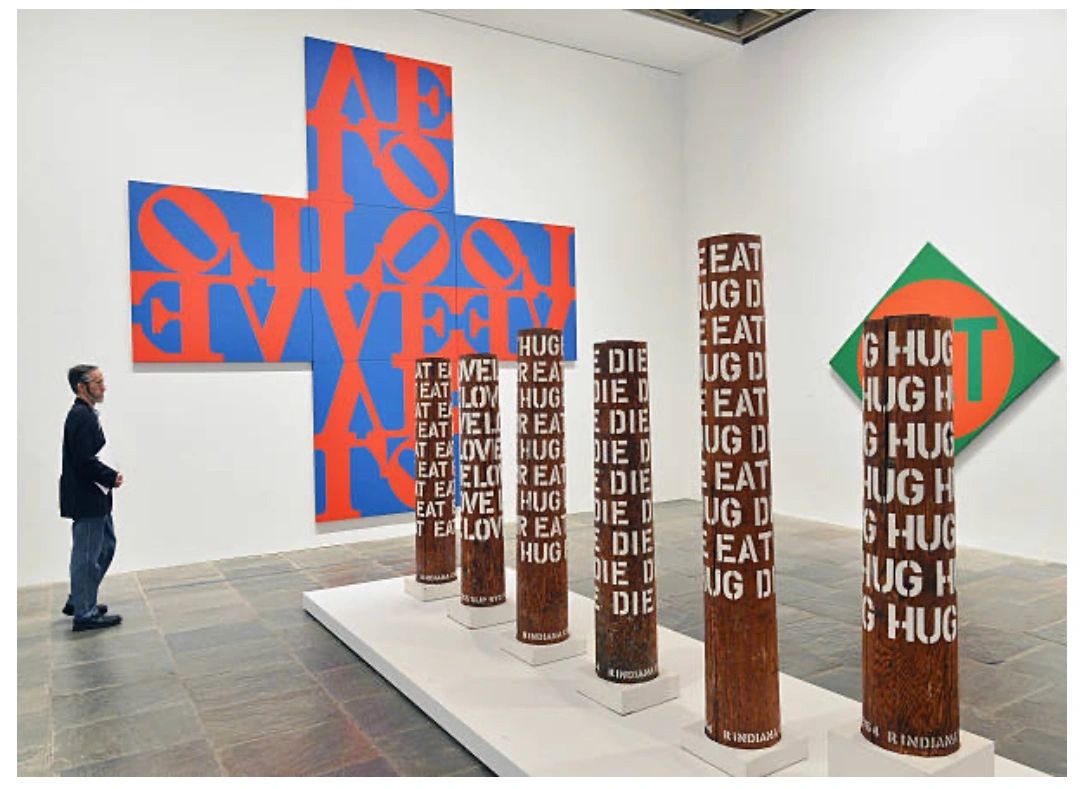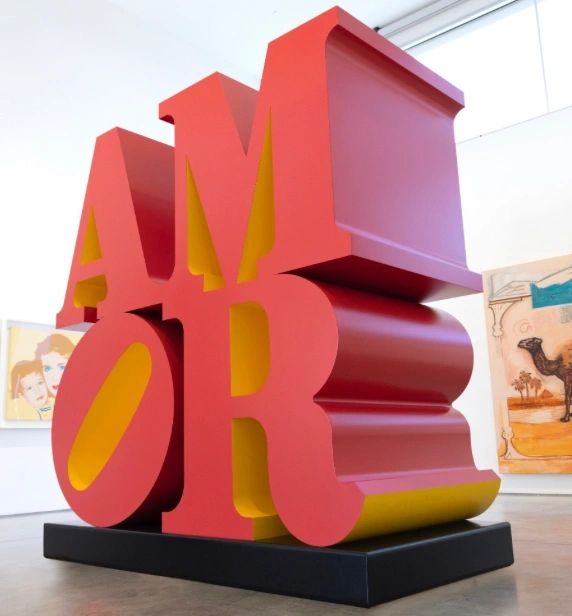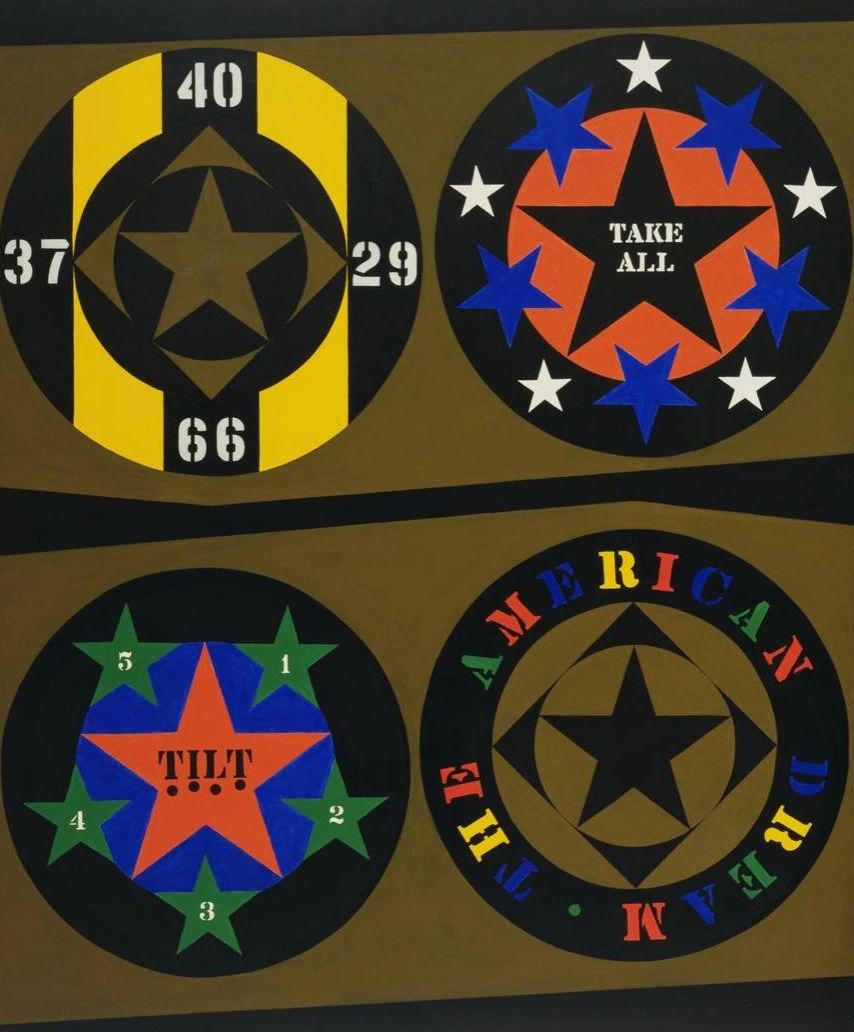Robert Indiana was born Robert Clark in 1928 and had a quite tumultuous upbringing: orphaned at birth by his natural parents, he was adopted as an infant by Earl and Carmen Clark. His childhood was erratic, as his family moved twenty-one times before his parents divorced when he was a teenager. Indiana was determined to pursue art and chose to serve in the US Army Air Corps at the age of seventeen in order to attend the Art Institute of Chicago on the GI Bill following his service. Once he took the degree, he went on studying at the Skowhegan School of Painting in Maine (summer 1953) and then took off to Europe to attend the Edinburgh College of Art. In 1954, he returned to the United States and settled in New York’s Lower Manhattan, where he lived and worked with several other artists. The most important encounter was with fellow artist Ellsworth Kelly, whom he met in 1956 and who became his partner. Kelly helped him find a loft on Coenties Slip, where he met neighboring artists like Agnes Martin and Cy Twombly, with whom he shared his studio for a time. In 1958, he changed his surname to Indiana because he felt Clark was too common, and he wanted to copy Renaissance artists whose last names were the names of their towns. His career took off in the early 1960s. After that, the influential curator Alfred H. Barr, Jr. bought The American Dream, I, for the Museum of Modern Art.

Indiana began a series of paintings in 1961 with a bold sense of graphic design and an affinity for symmetry and the dynamics of American advertising. Sometimes critical of consumer tendencies or political excesses in American culture, Indiana’s images combined stenciled text and numbers and hard-edged bright color fields into compelling signs. His ever-popular “Love” design—first realized as a painting in 1966 and later created in many other media, including sculpture—became a Pop icon of the 1960s.

On Valentine’s Day, February 14, 1973, the U.S. Postal Service issued Indiana’s design as a commemorative stamp. From now on, Indiana’s work became iconic. Nonetheless, despite the huge fame and success he came to experience as one of the Pop Art artists, Indiana was ambivalent towards this art movement and never totally comfortable with the consumerist nature of Pop Art. Later iterations of the design included translations into Spanish (amor) and Hebrew (ahava). Indiana created another version in 2008, replacing love with hope in support of Barack Obama, who used the word as one of the slogans for his U.S. presidential campaign.

In 1964, Indiana moved from Coenties Slip to a five-story building in the Village. In the summer of 1969, he visited Life magazine photographer Elliot Elisofon on the Island of Vinalhaven and began renting the upstairs of the 100-year-old Victorian-style Odd Fellows Hall in the island town of Vinalhaven, Maine. Indiana was drawn to the Odd Fellows insignia, which consists of three interlocking links. Deciding to move permanently to the island in 1975, Indiana grew reclusive in his final years. He died on May 19, 2018, at his home in Vinalhaven, at the age of 89. One day before his death, a lawsuit was filed over claims that his caretaker had isolated him from family and friends and was marketing unauthorized reproductions of his works.

Indiana’s legacy was the subject of many exhibitions, including the retrospective “Robert Indiana: Beyond Love” (2013–14), held at the Whitney Museum of American Art.His works are part of prestigious collections, including the Milwaukee Art Museum. His work has been offered at auction multiple times, setting his record price at 4 million dollars for “Love Red/Blue” sold at Christie’s New York in 2011.




